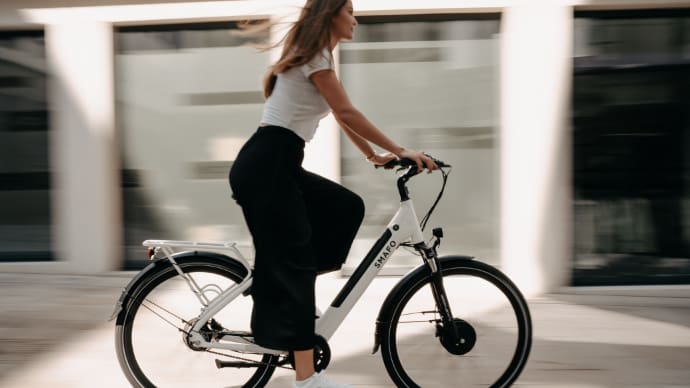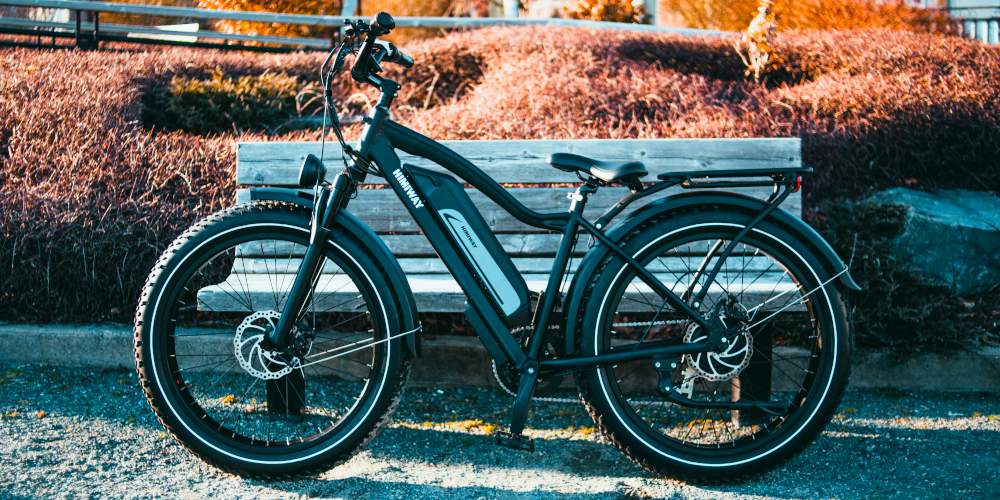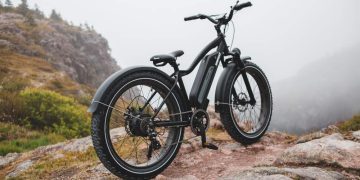Electric bicycles are one of the best inventions of our age. While riding a regular bike can be just as fun as an adult as it was when we were kids, some things may not be quite as we remember.
For example, if you live in a hilly area, you might struggle to make it up slopes—and that can really put a damper on the enjoyment. Another example, if you ride your bike to commute to work, you might appreciate some assistance so you don't arrive sweaty and tired.
But for some people, the struggles of riding a regular bike are part of the experience. Traveling via human power alone has its own allure.
So, which one is right for you: a modern e-bike with modern benefits, or a standard bike with traditional features? There's more to consider than you might think. Here's what you need to know.
Note: We're only considering pedal-assist e-bikes in this comparison of pros and cons. While throttle-driven e-bikes exist, they aren't allowed in many regions.
E-Bikes vs. Standard Bikes: Physical Fitness

Riding a bicycle can be a great way to get into shape, especially because you need to be fit to start riding.
Modern bikes—even cheaper budget ones—have large gear ranges that are designed to make it easier to pedal when you're going up steep hills. As long as you aren't trying to climb a vertical wall, you can actually ride up slopes without exerting as much energy as you might think.
Even so, riding a standard bike can still take a toll. You won't be able to ride very far until your muscles develop and your cardiovascular system builds up enough to keep those muscles oxygenated.
For those who haven't been active in a long time, or for those who want to ride longer distances without getting tired, or for those who simply have trouble riding standard bikes for whatever reason, a pedal-assist electric bicycle can provide the assistance you need.
Pedal-assist e-bikes still require pedaling, but the bike's electric motor provides juice and makes it easier to pedal, and that helps whether you're going up hill or riding long distances.
And pedal-assistance isn't just for newbie riders or those who fell out of shape; even tip-top health riders can make use of this. For example, mountain bikers use pedal-assist to help them get to the top of a trail so they can then rocket down with no assistance.
E-bikes can still be physically demanding to ride, especially because pedal-assistance can be adjusted. If you want to challenge your physical fitness while on an e-bike, you can turn pedal-assistance off.
E-Bikes vs. Standard Bikes: Maintenance
All bicycles—whether electric or not—require tune-ups and maintenance from time to time: chains get dirty and need cleaning; gears wear out over time; tires lose air and need to be refilled.
But when it comes to maintenance, e-bikes are certainly more difficult to maintain (and require more technical knowledge) than standard bikes. After all, e-bikes are still pretty new to market.
For standard bikes for casual riders, most parts are easy to work on using tools you likely already have around the house. Parts are relatively cheap and can be acquired with almost no hassle.
Higher-end road bikes and full-suspension mountain bikes may need specialty tools and knowledge. If you aren't interested in doing it yourself, you can go to a local bike shop for maintenance.
The same goes for e-bikes, but there are two additional issues to keep in mind as far as electric bicycles. First, you need to remember to keep the battery charged. Second, if there are motor issues, there's very little you can do yourself and will need professional assistance.
E-Bikes vs. Standard Bikes: Range
Riding distance, also known as range, is one area where e-bikes have an advantage over standard bikes—but that advantage isn't as staggeringly large as you might expect.
Every e-bike has a maximum range that depends on its motor and battery. As of this writing, most e-bikes cap out somewhere between 60 to 120 miles per charge—more than enough for a quick daily commute, but not enough if you're adventuring outdoors.
For as long as the battery lasts, you'll be able to ride an e-bike for less energy expended compared to a standard bike. But as your physical fitness improves, you'll be able to out-ride e-bikes—and at that point, your max distance is limited only by your own stamina.
Long-distance cyclists frequently celebrate "centuries" (i.e. rides that exceed 100 miles or 100 kilometers, depending on the region). It'll require significantly more effort than riding with pedal-assistance, but you can go much farther than any e-bike battery.
E-Bikes vs. Standard Bikes: Fun Factor

You can have fun on any type of bicycle, but you need to think about what kind of fun you want when deciding between getting an e-bike or getting a standard bike.
For example, if you want to bike up mountain trails, then an e-bike might make sense. E-bikes in the mountain biking world can make getting to the tops of steep trails a breeze, preserving energy.
Then again, the extra weight that comes with the motor and battery is going to make the bike heavier, which will affect your ride as you're going down—less nimble and harder to navigate.
If you're in an urban or suburban region and you're simply looking for an environmentally friendly alternative to driving your car, then a casual e-bike can make a lot of sense.
If you're in it for tricks and halfpipes, you'll want to stick with standard bikes (ideally ones designed for heavy abuse). If you just want a "pure" riding experience through nature, a standard bike is just fine.
E-Bikes vs. Standard Bikes: Price
E-bikes are, without a doubt, more expensive than standard bikes.
Even cheap e-bikes can be dramatically more expensive than regular bicycles—and we aren't even considering junk-tier, big-box store bikes that you can get at places like Walmart. (Those are notoriously unreliable and uncomfortable. Avoid at all costs.)
A solid standard bike can be acquired for a few hundred dollars, and you can slash that price further if you're willing to buy used. If budget is your primary concern, you'll want a standard bike.
With e-bikes, you get what you pay for. Cheaper ones aren't robust or trustworthy, and they can come with all sorts of headaches that you won't want to deal with. Expect to pay at least $1,000 for a quality entry-level e-bike from a reputable brand.
In either case, you don't want to skimp on your purchase only to be stuck with a bike you don't love. Stick to reputable brands, do your research, and be willing to pay up for quality.



